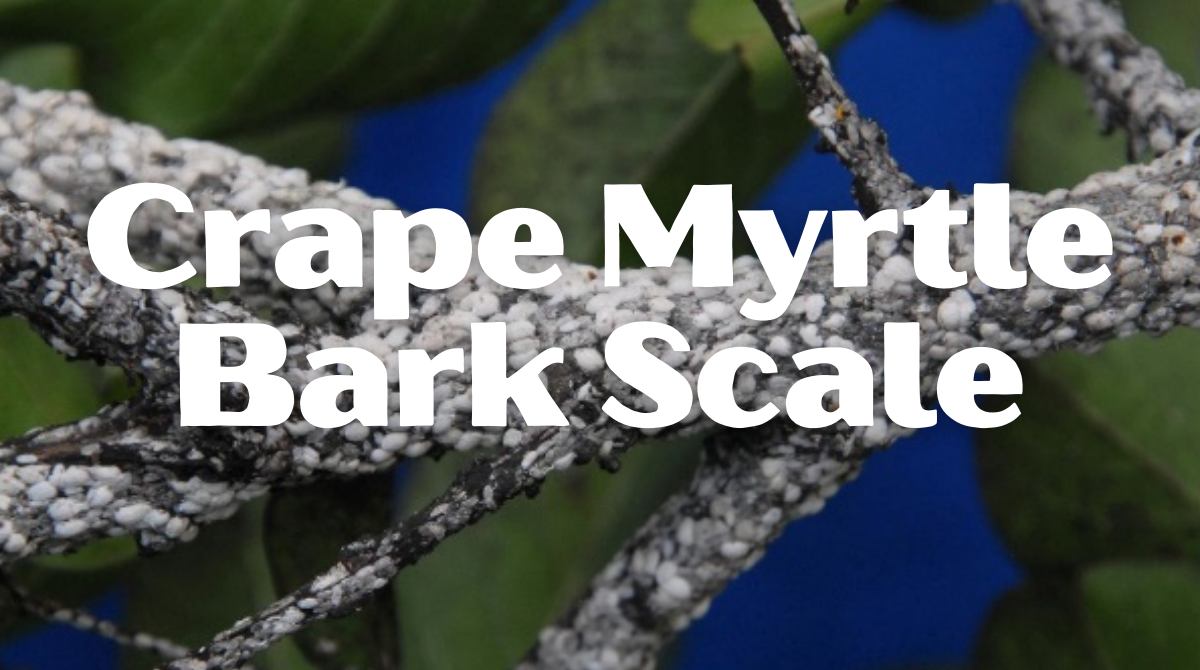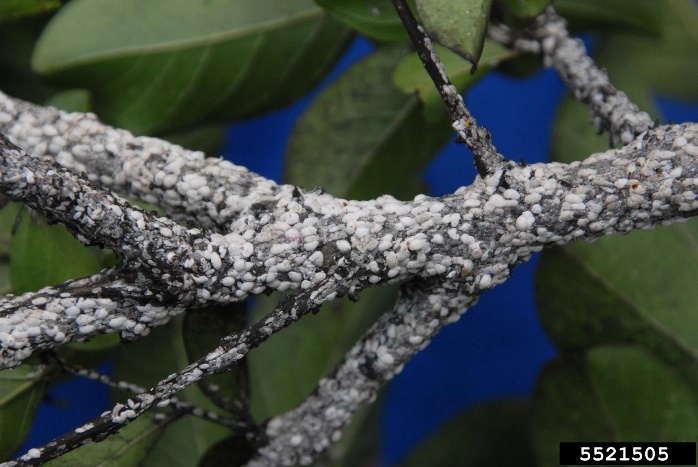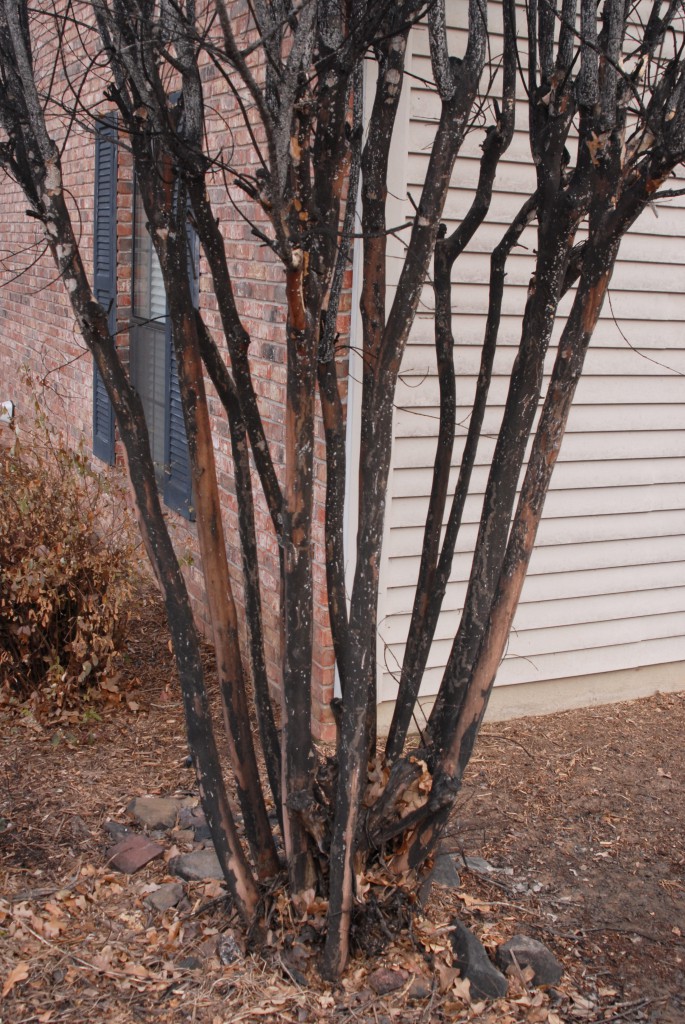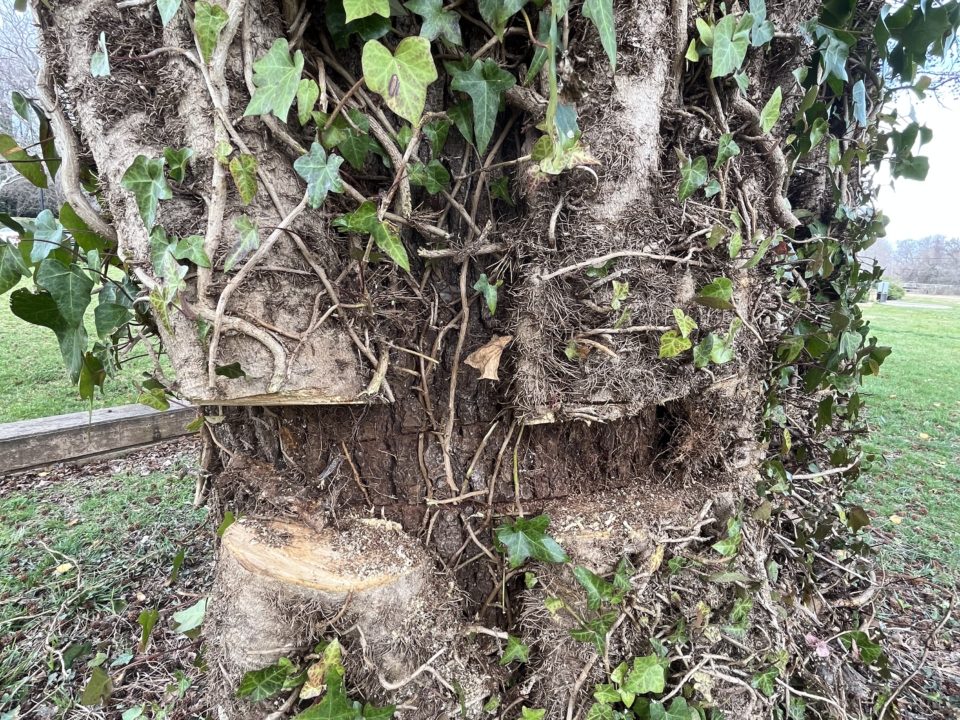
Tree of October 2021: Witch Hazel
10.04.21
November 2021 Tree of the Month: Sugar Maple
11.05.21

By: Kate Bolkin
Have you seen these white little suckers on your crape myrtles? If you have, it’s probably Crape Myrtle Bark Scale. This scale insect comes to us from Asia and was first discovered in Texas back in 2004. Since then, it has spread throughout the southeast, including Charlotte, NC.
As its name suggests, Crape Myrtle Bark Scale (CMBS) has a strong preference for crape myrtles, but can also infest other landscape plants like pomegranate, persimmon, boxwood, fig, and privet, especially if crape myrtles are planted nearby. CMBS individuals are small (about 2mm in length), greyish-white barnacle-looking insects that attach themselves to the bark of crape myrtles. They also come in the form of pink “crawlers” that move when observed closely. CMBS feeds on sugary sap flowing through the tree’s phloem. They can be found along the trunk, branches, and twigs of the tree.

CMBS is very similar to soft scale insects, meaning that they have a soft, waxy coat and produce honeydew. Honeydew is the sugary waste that CMBS excretes as it feeds (very different from the green melon, honeydew). A dark fungus called “sooty mold” usually grows from the sticky honeydew, and is often spotted on the crape myrtle before one finds the scale itself. However, honeydew and sooty mold can also come from other species of scale, aphids, and other sap-sucking insects, so it alone is not enough to diagnose CMBS without seeing the physical insect. Thankfully, they are relatively easy to spot with a close eye.
So now the big question—Are they harmful to your tree? In most cases, no! Typically, CMBS only affects the health of a tree when infestations are in very large quantities. Symptoms include reduced tree vigor, reduced flowering, and sometimes later leaf-out in the spring. It is extremely rare that CMBS will completely kill a tree. The biggest downside of CMBS is simply its unappealing aesthetic.
And in other good news, CMBS treatment for low and moderate infestations is quick, easy, and cheap. You can simply “wash” the bark of your tree with a mixture of water and standard dish soap. Be sure to use a soft brush and rinse gently to avoid breaking off pieces of bark. For extreme infestations, calling an arborist is recommended, since most pesticides that are effective at treating scale must be injected into the soil. And of course, keep your crape myrtle healthy by properly watering and mulching.

